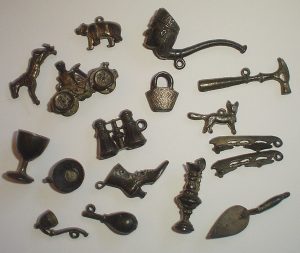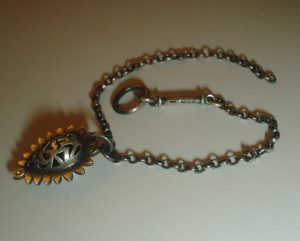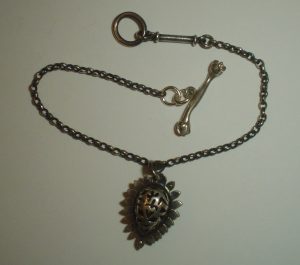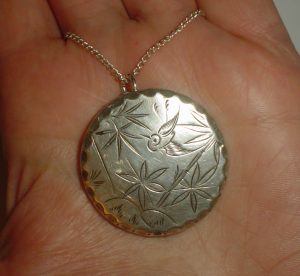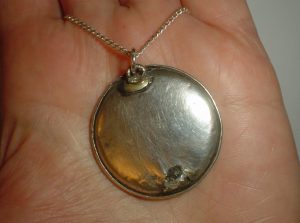Years ago, I bought these charms in a charity shop for £20.00. They must be at least 120 years old, and some of them are really quite beautiful. I particularly like the big pipe with a man’s head as the bowl – he looks like an Easter Island statue.
I wondered if the charms might be silver, but there’s something about the lustre and patina that isn’t quite right for silver. The other day, I got the ol’ testing kit out and was totally unsurprised to find that it came up negative. I think the they’re made from some kind of lead alloy. And as they’ve been stored in a box for a long time without seeing the light of day, I am selling them on Etsy.

